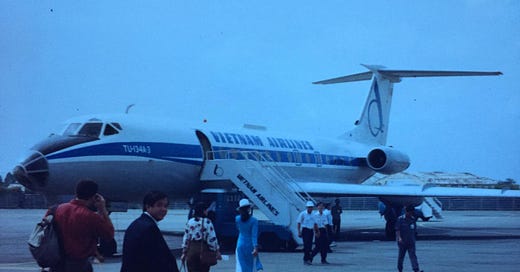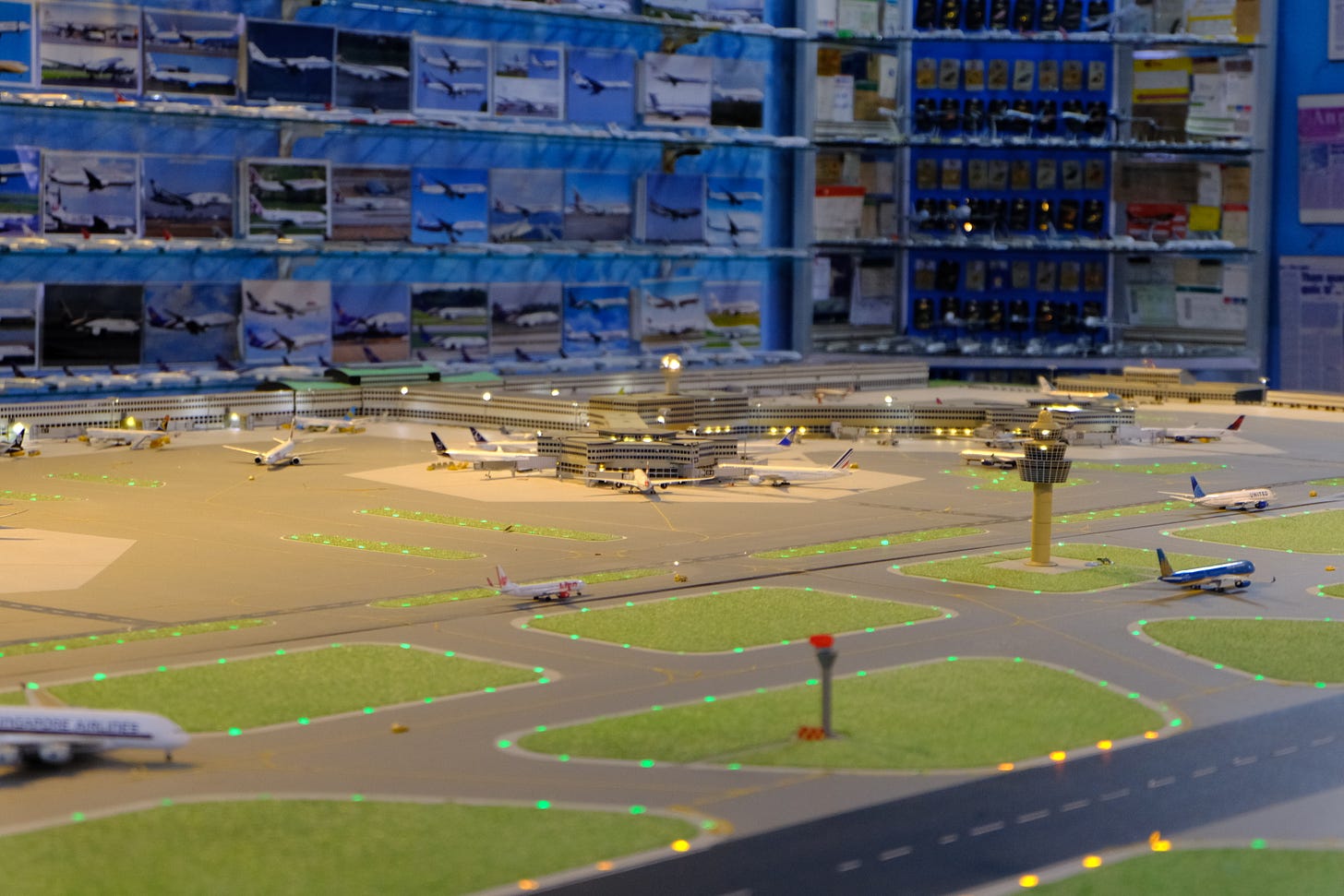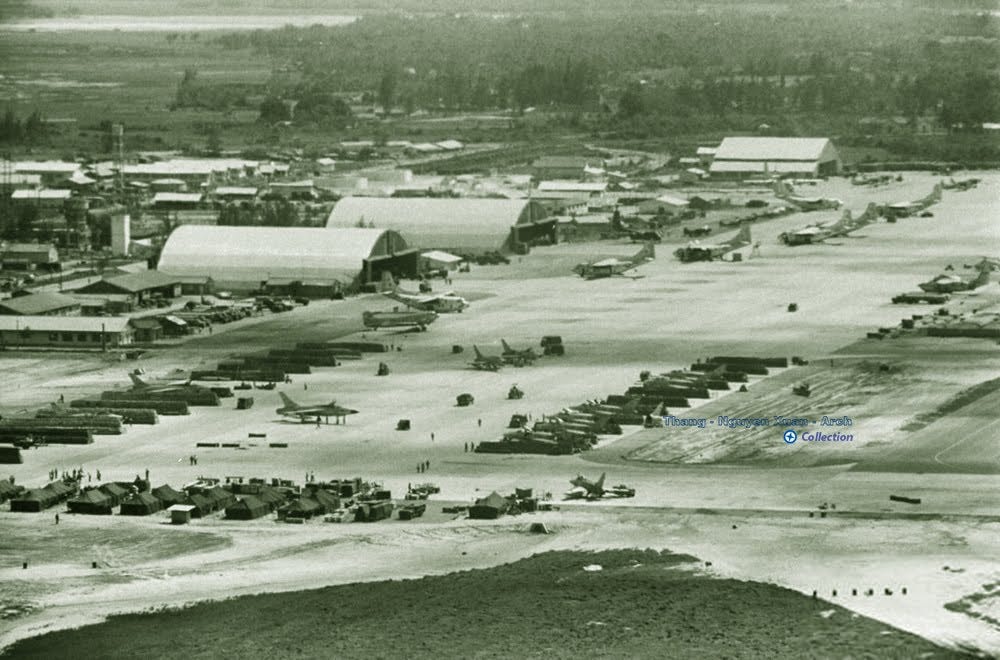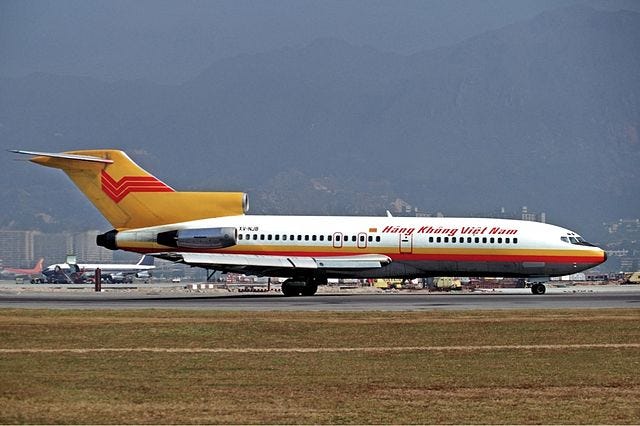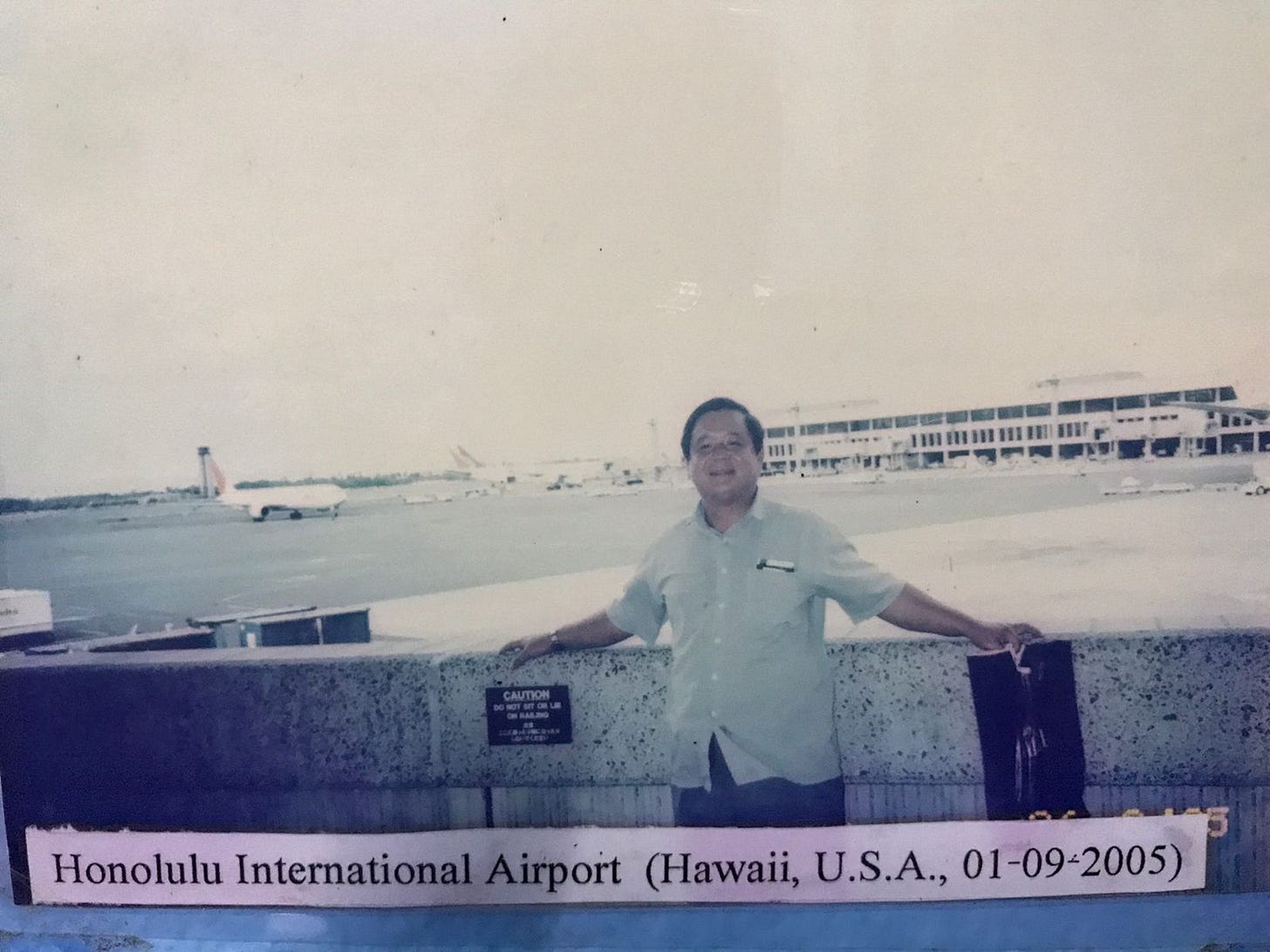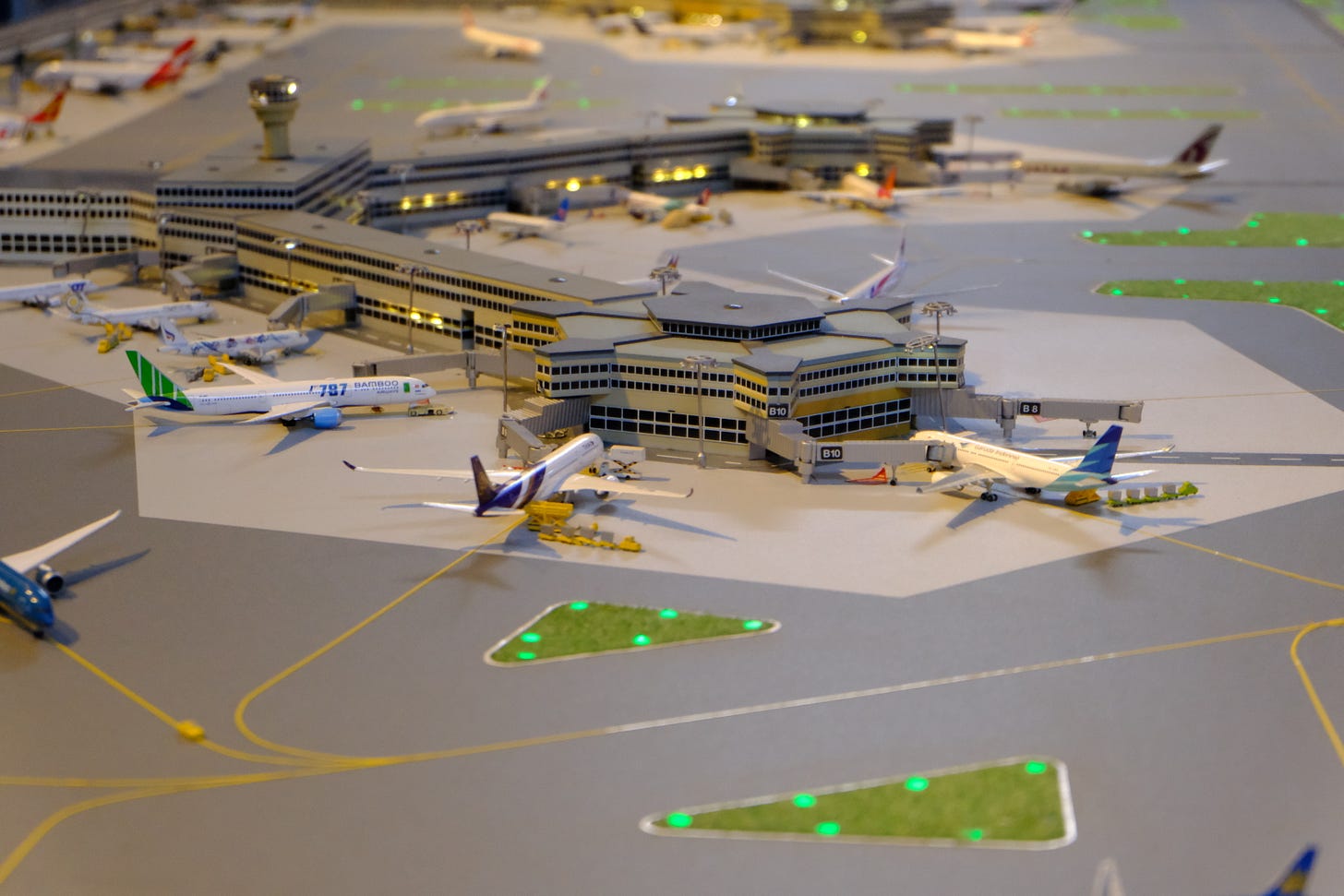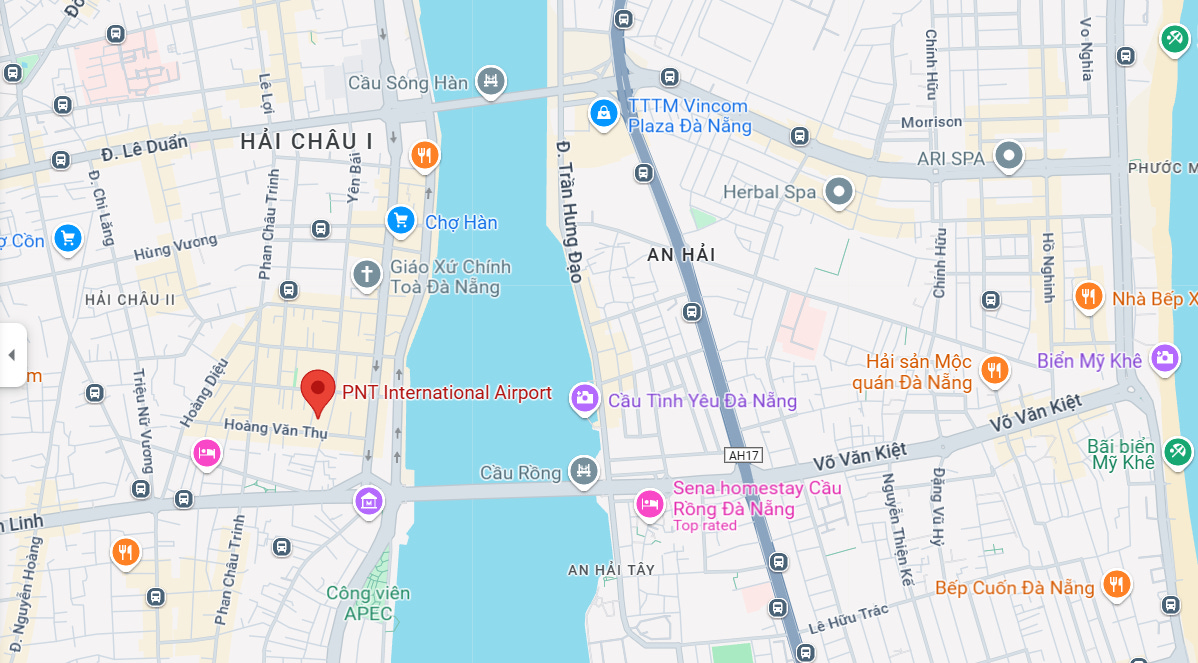The Man Who Built an Airport in His Home
In a Da Nang loft, Phan Ngoc Thiet has transformed his childhood obsession into Vietnam’s most unique attraction: a fully functional miniature airport with 1,407 model planes.
Contents
A Conversation with Mr Phan Ngoc Thiet: his life and times.
The Airport
How you May Visit PNT International Airport
Da Nang is a city of contrasts—a peculiar blend of history and modernity. Once the epicentre of American operations during the Vietnam War, its military airbase held the title of the busiest airport in the world. Today, Da Nang has reinvented itself as a haven for leisure and entertainment, with pristine white beaches, luxurious spas, theme parks, and glittering casinos.
Yet, amidst its vibrant present lies a connection to its turbulent past, embodied by one of its most unique residents, Mr. Phan Ngoc Thiet. Renowned for having the largest collection of model aircraft in Vietnam, he has built an entire miniature airport in his home—a tribute to his lifelong passion, now open to visitors.
Mr. Phan’s extraordinary story is rooted in a bygone Da Nang—one of roaring jet engines, tense military operations, and a city caught in the throes of war. His lifelong obsession with aviation was born from those tumultuous years, sparked by the dazzling sight of American aircraft overhead and solidified during a rare childhood flight on an Air Viet Nam Boeing 727. But like Da Nang itself, Mr. Phan’s dream of becoming a pilot was profoundly shaped—and ultimately thwarted—by the Vietnam War.
Still, his passion endured. Decades later, it has materialized in an astonishing way, blending his love of aviation with a creative vision few could imagine. During our visit to Da Nang, we stumbled upon PNT International Airport, Mr. Phan’s miniature marvel and perhaps the city’s most delightful hidden gem.
A Conversation with Mr Phan Ngoc Thiet
Mr Phan’s father moved his family to Da Nang in 1964 when he was eight years old. A year later, the American intervention in the Vietnam War began. The ground invasion in fact started in Da Nang itself, when the 9th Marine Expeditionary Brigade landed on the beaches of the city. Da Nang quickly rose to international recognition as the main operating base of the United States command. Da Nang US Airbase quickly became the busiest airport in the world at the time.
Mr Phan’s childhood home sat directly along the final approach route of runway 17R of the airbase. Day after day, he watched in awe as mighty jet aircraft roared overhead, landing just beyond his front door.
“Everyday, military airplanes, commercial airplanes, crossed in front of my house to make a U-Turn to land from North to South at number 17R. I would hear the noise and see all the aircraft all day. It made me feel [in awe] and love airplanes”.
US troops arriving in Vietnam often landed at Da Nang Airbase in Boeing 707s or DC-8s. This particularly captivated a young Phan, who’s obsession developed with commercial aircraft. Mr Phan explained that these planes were chartered from famous airline, from Pan American, TWA, to Continental and Delta.

I continued to ask Mr Phan about what his experience of Da Nang was like during the Vietnam War.
“Around 1968, there were 50,000 American troops in Da Nang alone. So the city was very crowded. It became the second largest city in Vietnam. You can see Da Nang now has a big airport – it is the same that was built by the Americans. In 1968 the North Vietnamese surrounded the city and there was a lot of fighting at the city edges.”
The Tet Offensive of 1968 was a pivotal moment in the Vietnam War, demonstrating the unyielding resolve of the communist forces to secure victory at any cost. That year became the bloodiest year of the war.
In 1969, Phan’s father took the family on a business trip to Saigon so that he may have the chance to experience flying on jet plane for the very first time. This cemented his fascination with airplanes as a life-long passion.
“We stood in the departure lounge for hours with the entire view of the airport, watching all the planes taking off and landing”.
He remembers the experience right down to the registration number: “Air Vietnam, Boeing 727-100, register XV NJB”, he told me.
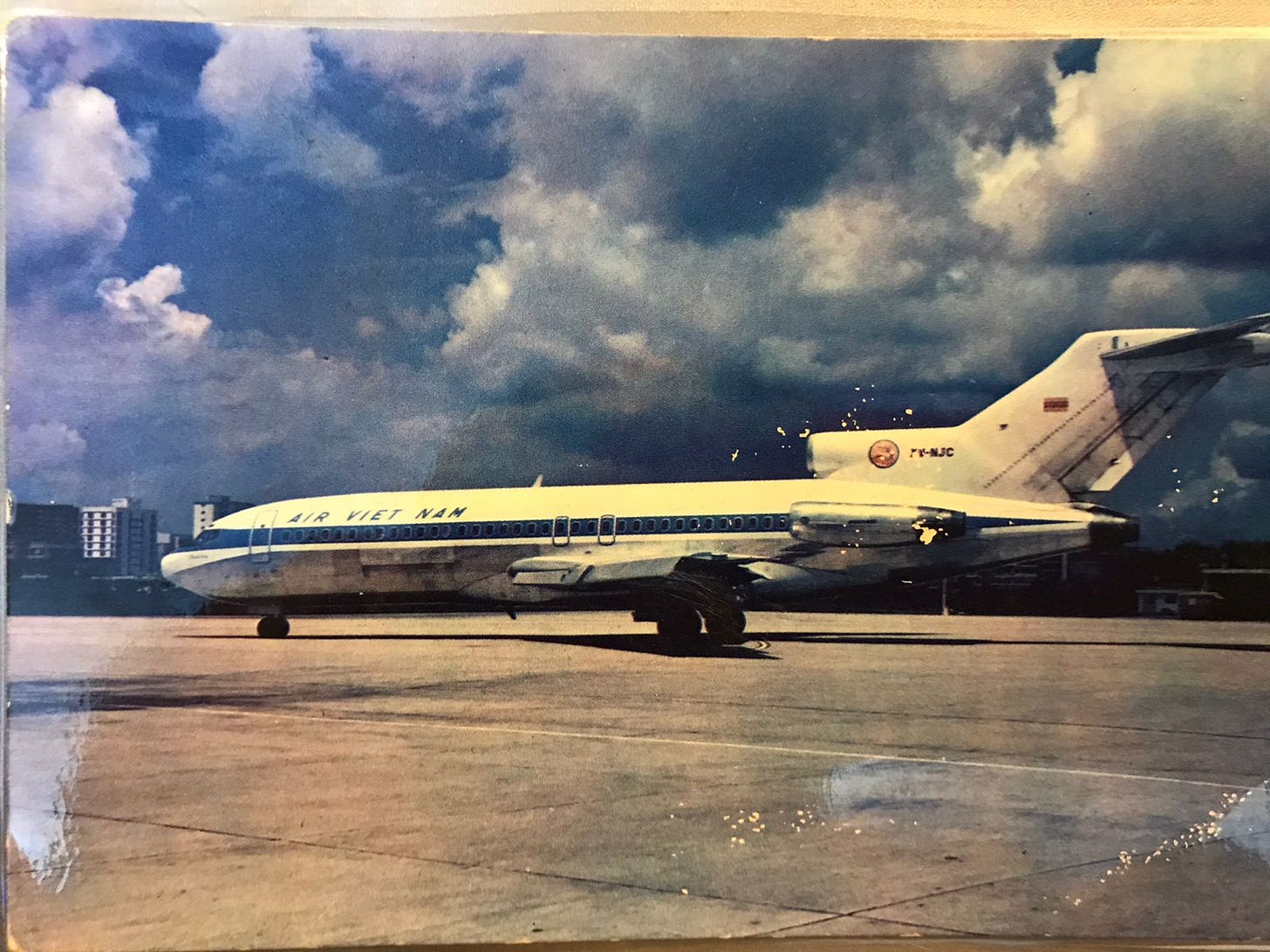
By 1972, the focus of the war had moved more to the North. President Nixon, preparing for the Paris Peace talks, sought to negotiate from a position of strength. This led to Operation Linebacker I & II, an extensive bombing campaign aimed at pressuring the North Vietnamese before the May Soviet Summit on détente and 1973 Paris Peace Accords, respectively. The mission remains one of the most controversial of the war, with its effectiveness still widely debated.
During Linebacker II, 20,000 tonnes of ordnance were dropped over North Vietnam in just 10 days. The strikes caused significant civilian casualties in Hanoi and Haiphong, but their impact on the communist troops, stationed largely underground, was likely minimal.
For Mr Phan, now 15, he witnessed the over 200 B-52 bombers and other various military aircraft leaving for attack sorties every day.
“Da Nang was quieter at that time. There was carpet bombing in the North and a lot of [ground] fighting in the South. There was still fighting around Da Nang, not in the city, but it was not so terrible.”
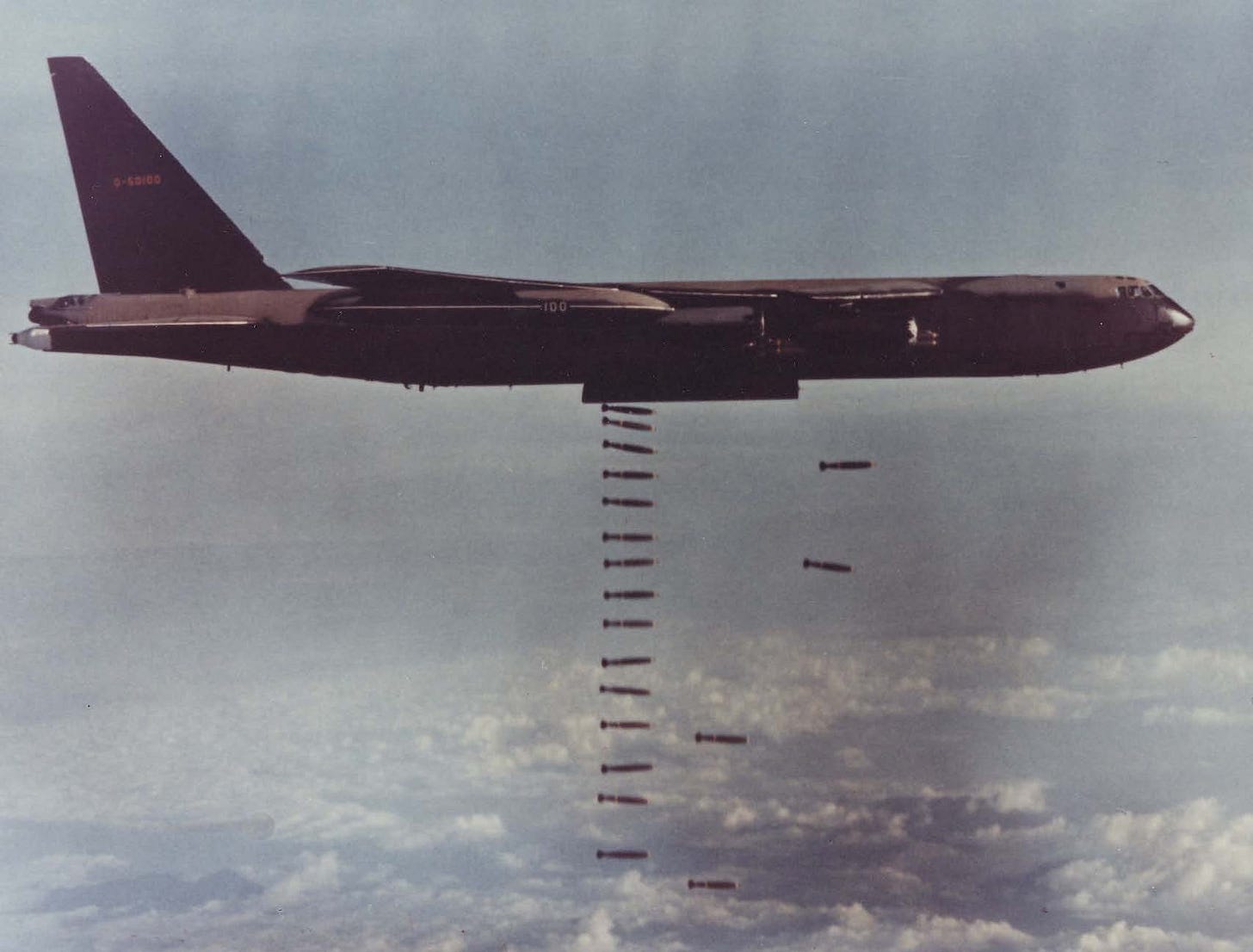
In 1975, Phan was 18 years old and determined to become an airline pilot. Yet, in the catastrophe of two worlds colliding, his first year of adulthood was the same year of the fall of Saigon. The Vietnam War had ended with a communist victory. The resulting political upheaval was a momentous change for the new People’s Republic of Vietnam that completely put Mr Phan’s dreams at odds during a formative time of his life. Now a communist nation, Vietnam was isolated from the Western world and embargoed. The drastic constitutional and ideological change brought about years of economic strife and inflation. Likewise, a war-stricken Vietnam was almost immediately drawn into the Third Indochina War (1978-1991) against China and various Lao and Cambodian factions.
The Vietnam we know now is one of incredible technological advancement and economic boom. However, for Mr Phan in his 20s and 30s, Vietnam was a struggling country locked into wars with little economic power.
“Because of the revolution, I missed the chance to become I pilot, you know? I had no more chance.”
Mr Phan eventually became an international businessman into the 1990s with the chance to travel across the world, but his dream didn’t die there in 1975.
“In 1995 I went to the United States, I visited the Museum of Aerospace. I bought two [model] aircraft. Later that year, I went to Hong Kong, and I bought two more aircraft. Every year, when I travelled here and there, I bought three or four more aircraft. I couldn’t buy too many – it’s very expensive. One model costs around €70. They’re very special.”
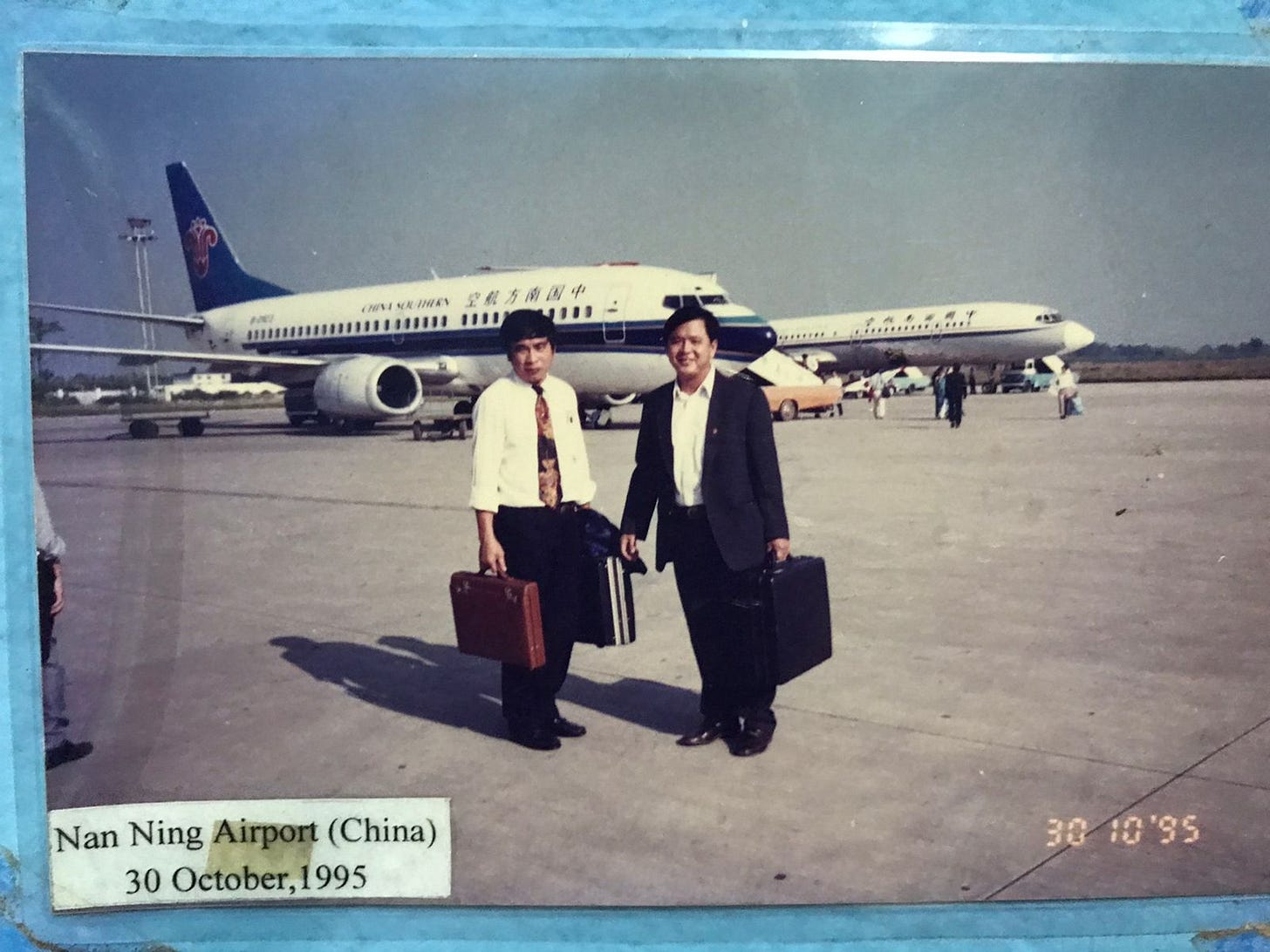
The Airport
In present day, Mr Phan now has 1,407 aircraft – all of which are on display at his miniature airport in his home’s mancave-loft.
Even more impressive is the international airport he has built entirely from imagination. It takes up almost all the space of his room, complete with a runway, airport lounges, different loading bays, and an air traffic control tower. It even has its own section for private aircraft, where Air Force One arrives to blacked-out cars and a red carpet.
The airport comes to life with its own electrical system: runway lights glow, and speaker beneath the table play the sounds of planes taxiing, taking off, and landing, complete with chatter from the aircraft control tower.
Surrounding this marvel, glass cases hold his collection of model planes, while the walls are plastered with family photos at airports, in front of planes, and newspaper clippings celebrating his passion.
One article reads ‘A common person with a “bizarre” hobby’.
On the far side of the room are diagrams of various planes, and a world map, above which a large, blue sign reads “WELCOME TO PNT INTERNATIONAL AIRPORT”.
Charismatic and confident, Mr Phan gave us an exclusive tour of his airport, equipped with a laser-pointer in hand. He showed us all his favourite aircraft, from vintage DC-3s and Boeing 707s to modern 787s. He doesn’t just collect planes; he collects every variant of them. For a 737 alone, that’s an astounding number of models. If it flies, he has it.
I tested him with niche planes. IL-62? He has it. Fokker 70? Yup. TU-144? Of course.
Mr Phan truly embodies the very meaning of “passion”. As a keepsake of our tour, he printed custom airline tickets embossed with our names, and gifted us shiny, flight-style sanitary towels bearing the “PNT” logo. He let us spend as much time with his miniature world as we wanted and answered all our questions. He truly knows everything there is to know about aeroplanes.
So, if you’re ever in Da Nang, do yourself a favour and visit Mr. Phan. It’s a truly unmissable glimpse into a local’s beautiful and unique mind.
How you May Visit PNT International Airport
PNT International Airport is situated on the interior side of the Hán River, about a five minute walk away from the famous dragon bridge (Cầu Rồng). His house is tucked behind metal gates to his drive, situated across a small clinic.
Address: 21/20, 21/20 Lê Hồng Phong, Phước Ninh, Hải Châu, Đà Nẵng 550000, Vietnam
As PNT International Airport is in Mr Phan’s home, you will have to call ahead. He is available on Whatsapp.
His number is: +84903501010
Ticket price:
Business Class (250,000VND): includes entrance, a guided tour of his airport and fine spirits after from cognac to wine. Mr Phan will also play the piano for you!
Economy Class (150,000VND): includes entrance, a guided tour of his airport, and a bottle of water.


